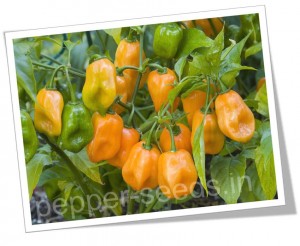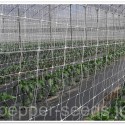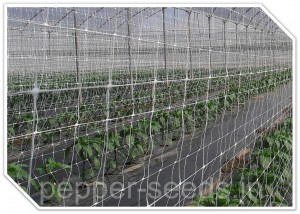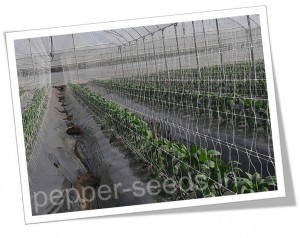Buying certified pepper seeds is a sound investment
Having a high quality pepper seeds, like any other crop, is a fundamental part of having a good production that season. For this reason, we always recommend that you buy high quality seeds, or in other words, certified seeds. When you buy certified seeds, you have a guarantee that the product that you have bought is free of disease causing pathogens such as bacteria, viruses, and fungi. When present, these pathogens can easily reduce the production of fruit or vegetative material in your plant. By knowing that your pepper seeds are protected from having an initial infection, you will have a peace of mind when purchasing your investment. Even so, buying certified pepper seeds is not a guarantee of having a great harvest that season. There exist several that play key roles in the growth of plants aside from just seed quality such as climatic conditions, the irrigation system and irrigation frequency, soil fertilization, and the tutoring system amongst others.
Purchasing certified pepper seeds is a very safe investment, but should still be protected and given the best crop support system that you can get. When you are ready to start growing your crops, the pepper seeds should be placed in germination trays and be given adequate humidity and temperature conditions for their specific cultivar. Once the seedlings are of the correct age and size they should be transplanted where they will have a crop support system as they grow larger. Trellis netting is an excellent option of plant tutoring that provides the support your crops need, and is used frequently in the cultivation of cucumber, chayote squash, tomato, eggplant, and pepper crops.

certified pepper seeds provide you information such as percentage of germination and percentage of fruiting
When you cultivate cucumbers, beans, chayote squash, most gourds, and other cucurbits, the trellis netting is placed above where the plants are growing and the plats are then allowed to grab onto the netting by themselves without human intervention. This has the double effect of reducing labor needs, by not only making your plants need less hand labor in order to grow correctly, but also because the trellis netting is much easier to place in comparison to various other crop support systems that are available.
For other crops such as tomato, tomatillo, and pepper, the recommended use of trellis netting is placing it on both sides of the furrow. This gives better trellis support to your crops while still reducing hand labor needs. Having a double net permits the plants to grow in their natural shape without the need to expose them to the stresses of being handled and as a side benefit, by reducing the handling of your crops, you also ensure that your crops are exposed to far fewer pathogens that are spread by contact with the tools and hands of anyone working on them.
The recommended placement of the crop netting is roughly 20 to 30 centimeters above the crop, taking advantage of the additional height that this gives the net and the plant. For example, if the netting is 1.5 meters tall, and the crop you have selected will grow up to 1.8 meters, placing the crop net those 30 centimeters above the ground will allow it to easily reach the required height needed by the plant without having to pay for an additional crop netting that goes to the full height of the plant.
To know more about the usage of support netting get in contact with HORTOMALLAS
If you would like to know about the prices of crops, visit Hortocost.
You can find us on facebook, twitter, google+, pinterest, youtube and linkedin.


